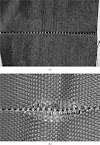Processing in Textile
Processing is one of the importance process in textile. Processing can be done on yarn as well as fabric. Let's see the common chemical processing done on fabric.
Here the fabric is treated with some chemicals to get the required qualities and finishing of the fabric. After processing, the fabric send to the garment industry, home furnishings and other sectors.
Let’s see some basic processing in textile –
A. Singeing
Singeing is process of cutting or burning the protruding threads from the fabric to remove unevenness. After this the fabric will have smooth hand.
B. Desizing
During preparation of beam a chemical size paste is applied to the yarns to increase the strength of the yarns to reduce the breakages during weaving process. This size paste has to remove as it is added impurity and to make fabric free from chemical.
C. Scouring
Removing the natural and added impurities like oil, waxes, fats, pectin, etc. It also helps in removing natural colouring matter during bleach.
D. Bleaching
It is used to impart whiteness by removing natural colouring matter or creamish colour of greige fabric to get prominence during dying. It uses NaoCl and H2O to perform oxidising and reducing process.
E. Mercerization
It is only applicable for cellulosic fibres especially cotton. Mercerization helps to alter the chemical & physically properties of the fabric. This process is used to treat cellulose fibers for swelling of fibres cell for good absorption of dyes. It uses concentrated alkali, caustic soda, etc. for the process.
This process helps to improve absorbency, lustre, strength, softness, dye uptake, shrinkage resistance, etc.
F. Dying
There are various ways of dying like direct dyes, diapers dye, pigment dye, reactive dye, etc. for respective nature of fabric.
G. Printing
Similarly printing uses various ways of print as per fabric nature e.g. direct style, discharge style, resist style, etc. using different printing techniques like roller printing, screen printing, sublimation printing, digital printing, block printing, etc.
H. Finishing
At the last stage, the finishing will be done to give required smoothness, lustre, fixing the width, etc using machines like stenter, sanforizer, calendar, etc.












0 Comments
If you have any doubts, please don't hesitate to ask